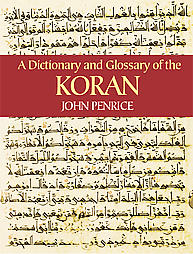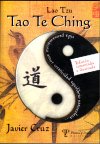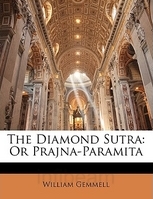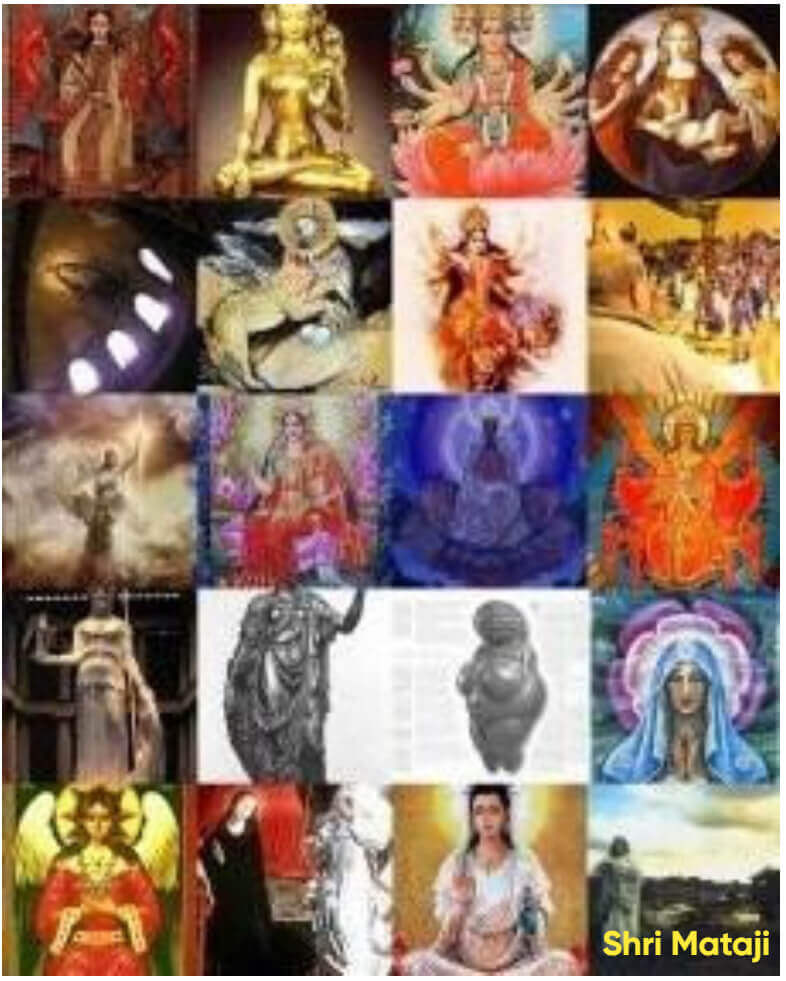The Light: Buddhism
Across centuries of Buddhist revelation, the Buddha is portrayed as a cosmic being of immeasurable light—radiating purity, joy, and liberation. From Zen halls glowing with unspeakable happiness to Mahayana sutras describing trillions of rays emanating from each pore of the Enlightened One, the theme of Divine Light permeates Buddhist mysticism. The Lotus Sutra, Flower Ornament Scripture, and Tibetan Book of the Dead all affirm this brilliance as the gateway to Nirvana. This Light is not metaphor—it is the Clear Light of Reality, the blissful radiance that dissolves suffering and reveals the eternal Self. In this Light, the Buddha becomes the King of Truth, the treasury of illumination, and the boundless mirror of cosmic compassion.






“Original Christianity—which was identical with Sanatana Dharma—taught that the Divine Light "was the light of men....the true Light, which lighteth every man" (Jn 1:4, 9) without exception. That Light cannot be alienated from us, but is ever the essence of our existence, making us "the children of light.” (Jn 12:36) This is the real Gospel, the Good News, of real religion.”
www.atmajyoti.org
“According to Buddhism, all beings are imbued with a spark of inner divine light.... The Jewish mystics use similar words when they speak of the inner spark or the spark of God. The Koran, referring to man, talks about the little candle flame burning in a niche in the wall of God's temple. Almost inevitably a spiritual search becomes a search for divine or sacred light. By cultivating our inner core, we search for this light in ourselves as well as the divine.”
Lama Surya Das
Soteriological and Ontological Functions of Luminosity in Buddhist Traditions
Abstract
This paper examines the multifaceted concept of "light" within Buddhist doctrine and practice. Moving beyond mere metaphor, light (āloka, prabhā) functions as a central ontological reality and soteriological catalyst across major Buddhist schools. Through an analysis of primary texts from Zen, Pure Land, and Mahayana traditions, including the Flower Ornament Scripture, the Lotus Sutra, and the Tibetan Book of the Dead, this study demonstrates that light is intrinsically linked to the nature of Buddha himself, the experience of awakening (bodhi), and the ultimate state of Nirvana. The analysis reveals a spectrum of interpretation, from the non-theistic, experiential radiance of Zen to the theistic, salvific light of celestial Buddhas like Amitabha, culminating in the non-dual Clear Light of reality in Vajrayana. Ultimately, the paper argues that the pervasive imagery of brilliance serves a unified purpose: to delineate a path from ignorance to enlightenment, where the perception of external light leads to the realization of an internal, luminous nature, resulting in the supreme bliss of liberation.
Introduction
In the study of religious experience, light is a universal signifier of the sacred, the divine, and the transcendent. Within the Buddhist tradition, which often eschews theistic creator-gods, the concept of light retains a profound and complex significance. It is not merely a symbolic representation of wisdom (prajñā) opposing the darkness of ignorance (avidyā), but is frequently presented as a tangible, experiential phenomenon with transformative power. This paper explores the theme of "The Light" in Buddhism, arguing that it operates on three interconnected levels: as an attribute of the Buddha(s), as the fundamental nature of reality and mind, and as the direct catalyst for the experience of Nirvanic bliss. By examining scriptural evidence from diverse Buddhist traditions, we can trace a coherent though multifaceted doctrine of luminosity that is central to the soteriological goal of ending suffering.
1. The Buddha as a Source of Cosmic Light
In many Buddhist texts, particularly those of the Mahayana ("Greater Vehicle") tradition, the Buddha is depicted not merely as a historical teacher but as a cosmic being of immense radiance. This light is both a manifestation of his enlightenment and a means of his compassionate activity in the world.
The early Dhammapada establishes this theme, stating:
"The sun shines by day, the moon shines by night; continually, day and night, does the luminous Buddha shine."(Rockhill, 199)
This luminosity is not passive; it is an active force of illumination and purification. The Lotus Sutra provides a dramatic visualisation of this:
"The Buddha emitted a light from between his eyebrows, manifesting signs that are rarely seen. This light illumined the eastern direction, eighteen thousand Buddha lands..."(Watson, 18)
The light here functions as a revelatory tool, unveiling the intricate, jeweled cosmos to the assembled audience and affirming the Buddha's cosmic sovereignty.
This theme reaches an apogee in the Flower Ornament Scripture, which contains an overwhelming number of references to the Buddha's radiance. The text describes the Buddha as a "boundless treasury of light" (Cleary, 510-511), whose body "emanates great light" (Cleary, 262), filling the entire cosmos. The descriptions are not only vast but also precise, suggesting an infinite scalability of brilliance:
"each secondary attribute sends forth eighty-four thousand rays of light; each ray of light shines out over the world of the ten quarters"(Yamada, 57 & 59)
This repetitive, numerical grandeur serves to convey a light that is beyond ordinary human comprehension—a "great light, inconceivable" (Cleary, 346). The consistent message is that this divine light is incomparable, as:
"The lights of the world / Cannot match the light of a single pore of the Buddha"(Cleary, 82-83)
2. Light as the Nature of Mind and Reality
In parallel to the theistic depictions of a luminous Buddha, other Buddhist schools, particularly Zen and Vajrayana, posit light as the fundamental nature of the mind itself. This shifts the focus from an external, divine figure to an internal, innate reality.
Zen texts describe enlightenment (satori) as an experience of sudden, illuminating clarity. One disciple, after intensive meditation, reported:
"astonished that unnoticeably the Zen hall and myself were radiant in an absolute light," accompanied by an "unspeakable feeling of happiness."(Dumoulin, 145)
This is not a light perceived with physical eyes, but a radical shift in perception where consciousness itself becomes luminous, illuminating both the self and the environment in a new, non-dual way. The poetic verse of the Shin-jen-mei captures this:
"The mind mirror illumines all ingenuously. / Its penetrating, limitless rays reach everywhere in the universe"(Senzaki & McCandless, 55)
Here, the mind in its natural, purified state is a mirror-like radiance that encompasses all of reality.
The most explicit formulation of this concept is found in the Tibetan Book of the Dead (Bardo Thödol). This text describes the "Clear Light of Reality" that is encountered after death—a radiance that is, in fact, the ground of one's own consciousness. The text instructs the deceased to recognize this light:
"Thine own consciousness, shining, void and inseparable from the Great Body of Radiance, hath no birth, nor death, and is the Immutable Light—Amitabha Buddha"(Evans-Wentz, 96)
This is a critical doctrinal point: the ultimate reality (Dharmakaya) and the mind of the sentient being are of the same essential, luminous nature. The "Clear Light" is described as:
"Voidness and Brightness inseparable,—The Voidness bright by nature and the Brightness by nature void"(Evans-Wentz, 167)
This non-dual understanding unites the ontological (the nature of being) with the soteriological (the path to liberation).
3. Luminosity and the Attainment of Bliss
The encounter with light in Buddhism is consistently correlated with the experience of supreme joy and the cessation of suffering (duhkha), which is the ultimate goal of the Buddhist path. The brilliance of the Buddha is not fearsome but salvific and bliss-bestowing.
The Lotus Sutra explicitly links the emission of light with the purpose of bringing "joy and delight" to believers and to "Adorn and purify" the world (Watson, 7). A Mahayana text notes that:
"His light, pure and immense, makes all sentient beings feel joyful in body and mind"(Chang, 348)
This joy is a direct result of the light's power to dispel the "dark places" of existence and even cause "the pains of hells to disappear" (Cleary, 264).
The Flower Ornament Scripture elaborates extensively on this theme, directly connecting the vision of the "Pure Light" with the arising of joy (Cleary, 84). The text states that the Buddha's past cultivation of an "ocean of joy" means that "all who see him are glad" (Cleary, 128). This joy is not merely emotional but is a fundamental characteristic of liberation, as seen in the "liberation of Blissful Happiness" (Cleary, 128). The culmination of this process is the achievement of a state where one is "illumined by the Buddha's light," resulting in beings who are "peacefully happy," their minds "full of joy" as the "pains of existence [are] cleared away" (Cleary, 258). The Tibetan Book of the Dead similarly describes the Clear Light as inherently "blissful" (Evans-Wentz, 150). This consistent association positions the experience of light as the very antithesis of samsaric suffering and the direct gateway to Nirvana, defined not as annihilation but as the highest, undying bliss.
Conclusion
The investigation of light across Buddhist scriptures reveals a profound and coherent theme that adapts to the metaphysical preferences of different schools while maintaining a consistent soteriological core. Whether conceptualized as the magnificent radiance of a celestial Buddha showering compassion upon the world, as the innate clarity of the mind-mirror realized in Zen meditation, or as the non-dual Clear Light of the Void that is the ground of the post-mortem state, light in Buddhism is fundamentally transformative. It represents the ultimate reality, the nature of the awakened mind, and the active force of liberation. The journey from ignorance to enlightenment is framed as a movement from darkness into an "unspeakable" brilliance that simultaneously reveals the true nature of the cosmos and fills the beholder with transcendent peace and joy. In the final analysis, to perceive the light is to perceive the end of suffering, making luminosity not just a poetic image, but the very substance and goal of the Buddhist path.
References
- Chang, Garma C.C. (ed.). A Treasury of Mahayana Sutras: Selections from the Maharatnakuta Sutra. University Park: The Pennsylvania State University Press, 1983.
- Cleary, Thomas (trans.). The Flower Ornament Scripture. Vol. 1. Boulder, Col.: Shambala, 1984.
- Dumoulin, Heinrich. Zen Enlightenment: Origins and Meaning. N.Y.: Weatherhill, 1979.
- Evans-Wentz, W.Y. (ed.). The Tibetan Book of the Dead. London: Oxford University Press, 1960.
- Rockhill, W. Woodville. Udanavarga: A Collection of Verses from the Buddhist Canon. London: Trubner & Co., 1883.
- Senzaki, Nyogen and McCandless, Ruth S. (trans. and eds.). Buddhism and Zen. N.Y.: Philosophical Library, 1953.
- Watson, Burton (trans.). Lotus Sutra. NY: Columbia University Press, 1993.
- Yamada, Meiji (dir.). Sutra of the Contemplation on the Buddha of Immeasurable Life. Trans. by Ryukoku University Translation Centre. Kyoto: Ryukoku University, 1984.
The Divine Light: A Universal Constant Across All Religions
Testimonies of Kash, Arwinder, and Lalita as Contemporary Evidence of God's Presence Within Humanity
Author: Manus AI
Date: October 10, 2025
This comprehensive academic paper examines the profound spiritual testimonies of three children—Kash, Arwinder, and Lalita—who have consistently witnessed and described the Divine Light above Shri Mataji Nirmala Devi in their Sahasrara (Kingdom of God) during meditation. Through detailed analysis of their recorded experiences spanning over a decade, combined with comparative study of Light symbolism across all major world religions and supported by direct quotes from Shri Mataji herself, this paper demonstrates that the Light is indeed a universal constant of divine manifestation. The children's testimonies, particularly Lalita's definitive identification of this Light as "God," provide contemporary empirical evidence for the theological truth that God Almighty resides within all humans as Light. This paper offers profound hope to humanity by establishing that the long search for the Creator culminates not in external seeking, but in the recognition of the divine Light within our own being.
Table of Contents
- 1. Introduction: The Quest for Divine Light
- 2. The Sacred Testimonies: Kash, Arwinder, and Lalita
- 2.1 Kash's Pioneering Revelations (1993-1994)
- 2.2 Arwinder's Independent Confirmations (1996-1998)
- 2.3 Lalita's Definitive Declaration (1998-2005)
- 3. Shri Mataji's Teachings on the Divine Light
- 4. The Light as Universal Constant Across All Religions
- 5. Theological Implications: God Within as Light
- 6. A Message of Hope for Humanity
- 7. Conclusion: The Search is Over
- 8. References
1. Introduction: The Quest for Divine Light
Throughout the annals of human spiritual history, the quest for divine illumination has been the driving force behind humanity's deepest religious aspirations. From the primordial utterance "Let there be light" in Genesis [1] to the Qur'anic declaration that "Allah is the Light of the heavens and the earth," [2] the equation of divinity with Light transcends cultural, geographical, and temporal boundaries. This universal constant has been proclaimed by every major religious tradition, yet remained largely in the realm of metaphor and mystical speculation—until now.
This paper presents extraordinary contemporary evidence for the literal reality of Divine Light through the documented spiritual experiences of three children: Kash, Arwinder, and Lalita. Their testimonies, spanning over a decade of consistent observations, provide unprecedented empirical validation of what scriptures have proclaimed for millennia. Most significantly, these experiences occurred during meditation in the presence of Shri Mataji Nirmala Devi, who claimed to be the Adi Shakti (Primordial Divine Mother) and who opened the Sahasrara (Kingdom of God) for humanity on May 5, 1970. [3]
Shri Mataji Nirmala Devi proclaimed: "You have to know on this point that you have got the Light... You have such a unique Light within you. In the history of spirituality of this world so many have got Realization—such a Light in them. How could these stupid, flimsy, useless conditionings dominate you now, when you are the carrier of Eternal Light." [4]
2. The Sacred Testimonies: Kash, Arwinder, and Lalita
The foundation of this paper rests upon the meticulously documented spiritual experiences of three children who, through their innocence and purity, have provided humanity with direct testimony about the nature of Divine Light. Their accounts, recorded over many years with precise dates and detailed questioning, offer an unprecedented window into the reality of divine perception.
2.1 Kash's Pioneering Revelations (1993-1994)
The First Encounter: On the very first day of Self-realization, Kash found himself standing on an endless cover of clouds in what he described as an "incredible, utterly peaceful Shangri-La." There was one distinguishing reality of this celestial landscape that held him spellbound—The Light! It was shining above at a distance he was unable to discern, an extremely bright globe much brighter than many suns, yet in spite of its dazzling brightness, it never hurt his eyes. [5]
Kash's detailed observations of this Divine Light revealed characteristics that fundamentally distinguished it from any earthly phenomenon:
| Characteristic | Kash's Observation | Spiritual Significance |
|---|---|---|
| Position | Always behind Shri Mataji at approximately 45 degrees | Fixed, eternal presence above the Divine Mother |
| Movement | Stationary—does not rise or fall like earthly sun | Transcends temporal limitations |
| Illumination | Illuminates entire Kingdom of God in fine detail | Divine consciousness revealing all reality |
| Temperature | Emits cool rays, no heat despite intense brightness | Love and compassion rather than consuming fire |
| Shadows | Creates no shadows whatsoever | Pure spiritual light transcending physical laws |
The pivotal moment came on September 11, 1994, at 13:05 p.m., when Kash's father, reading the word Shaibhang (Self-illumined) in the Sri Guru Granth Sahib, realized there was more to this truth than met the mind. If Guru Nanak had described the Divine World as Self-Illumined, then what Kash was witnessing could not be an ordinary sun. [6]
The Divine Revelation: When Kash meditated and asked Shri Mataji directly about this phenomenon, the Spirit of the Living God informed him that it was not the sun he was seeing, but the Light—the Divine Light of God Almighty Himself.
2.2 Arwinder's Independent Confirmations (1996-1998)
Arwinder's testimonies provide crucial independent verification of Kash's experiences. On April 7, 1996, when asked if he had seen any sun or light when meditating with the Great Primordial Mother, Arwinder replied without hesitation that there was always a Light at Her place, but he was certain it couldn't be Earth's sun. His reasoning was profound for a child: despite its extreme brightness, it didn't hurt his eyes like the sun does. [7]
Arwinder's Consistent Testimony:
- February 23, 1998 (11:40 a.m.): Confirmed the Light was always above Shri Mataji and that there were no shadows
- July 10, 1998 (10:35 a.m.): Again confirmed no shadows from this Light
- March 23, 2003: Described the Light as "white, white yellow" in color
The significance of a child consistently stating that light causes no shadows in the Spiritual World, contrary to all earthly experience, demonstrates the overwhelming confidence that comes only from authentic spiritual experience.
2.3 Lalita's Definitive Declaration (1998-2005)
Lalita's testimonies represent the culmination of divine revelation. At the tender age of three years and eleven months, on March 30, 1998, she first described her experience of meeting Shri Mataji "in my head," bringing seven flowers and witnessing the Light that was like "morning" and didn't hurt her eyes. [8]
The Historic Dialogue - May 4, 2004 (7:30 a.m.):
Father: What is above Shri Mataji's head?
Lalita: The Light.
Father: Can you look at it for a long time?
Lalita: Yes, you can look at it.
Father: Does it not blind you?
Lalita: It doesn't blind me.
Father: Is it different from the sun you see on Earth?
Lalita: Yes... It's smaller... It doesn't blind you. What else... It's brighter. OK? [9]
But the most profound moment came in March 2005, when Lalita, now ten years old, was asked what that immensely brilliant Light above the Adi Shakti in her Sahasrara was. Her response was simple, direct, and theologically revolutionary:
Her father remained silent for a long time to absorb the immensity of that single word answer. [10]
3. Shri Mataji's Teachings on the Divine Light
The testimonies of the children find profound resonance in the teachings of Shri Mataji Nirmala Devi herself, who consistently spoke about the Light within human beings and its divine nature.
On the Light of Love (October 24, 1987): "Such a person who has this light of love, loves himself as well and emits love for others... This light, if you put finger on it, it will burn but the light of love never burns. It dissolves all that is bad, it rejects, it turns away from whatever that is wrong. It has patience and it expels the darkness. Darkness within and without." [11]
On the Eternal Light Within (November 6, 1994): "You have to see for yourself you have such a unique Light within you. In the history of spirituality of this world so many have got Realization—such a Light in them... It is such a powerful Light. You can verify it whether it is eternal or not... It cannot be killed by anybody, nothing can destroy it. Even if you want to suck it you cannot. It is such a powerful Light." [12]
Shri Mataji's teachings provide the theological framework for understanding the children's experiences. She consistently emphasized that this Light is not merely symbolic but represents the actual presence of the Divine within human consciousness.
4. The Light as Universal Constant Across All Religions
The testimonies of Kash, Arwinder, and Lalita do not exist in isolation but represent the contemporary manifestation of a universal spiritual truth proclaimed by every major religious tradition throughout history.
| Religion | Divine Light Concept | Sacred Text Reference | Connection to Children's Testimony |
|---|---|---|---|
| Hinduism | Jyoti (Sacred Light) - Brahman as Light of lights | "There the sun shines not... By His light, all this is illumined" (Mundaka Upanishad 2.2.10) [13] | Matches description of Light that outshines earthly sun |
| Christianity | God as Light, Christ as "Light of the world" | "God is Light, and in Him is no darkness at all" (1 John 1:5) [14] | Confirms Light as divine essence without darkness |
| Islam | Nur - Allah as Light of heavens and earth | "Allah is the Light of the heavens and the earth... Light upon light" (Qur'an 24:35) [2] | Validates infinite luminosity without blinding effect |
| Buddhism | Clear Light of Reality, Buddha as Light of Asia | "Luminous, monks, is the mind" (Anguttara Nikaya) [16] | Supports consciousness as inherently luminous |
| Judaism | Or Ein Sof - Infinite Light of God | "The LORD is my light and my salvation" (Psalm 27:1) [17] | Affirms God as source of all illumination |
| Sikhism | Shaibhang - Self-illumined Divine Reality | Sri Guru Granth Sahib opening stanza [18] | Directly referenced in Kash's revelation moment |
Universal Truth Revealed: "This Revelation of the Light is the collective truth of the Holy Scriptures. This Light has been announced by all His Messengers. Since the dawn of civilization highly evolved souls have been searching relentlessly for this Light. This is the Light of Shri Krishna. This is the Light of Shri Jesus. This is the Light of Shri Buddha. This is the Light of Allah, of Yahweh, of Brahman or any other name that humans give to Him. God Almighty is Light!" [19]
5. Theological Implications: God Within as Light
The convergence of the children's testimonies with universal scriptural truth carries profound theological implications that revolutionize our understanding of the divine-human relationship. When Lalita identified the Light above Shri Mataji as "God," she provided contemporary empirical validation for the most fundamental spiritual truth: God resides within human beings as accessible Light.
This revelation validates Jesus Christ's teaching that "the Kingdom of God is within you" (Luke 17:21), [20] which has been historically misunderstood as metaphorical. Lalita's description of experiencing this Light "in my head" corresponds precisely to the Sahasrara chakra—the thousand-petaled lotus at the crown of the head, recognized across Eastern traditions as the seat of divine consciousness.
The Absolute Truth Proclaimed: "His Light exists within all humans—This Revealed Truth is Absolute. His Light emits cool rays—This Revealed Truth is Absolute. His Light cast no shadows—This Revealed Truth is Absolute. Spirit beings have no shadows—This Revealed Truth is Absolute." [21]
The implications extend beyond individual spirituality to encompass the entire human condition. If God Almighty manifests as Light within every human being, then the fundamental nature of humanity is divine. This understanding transforms our perception of human potential, dignity, and destiny.
6. A Message of Hope for Humanity
In an age of spiritual confusion, religious conflict, and existential despair, the testimonies of Kash, Arwinder, and Lalita offer humanity a message of unprecedented hope. Their experiences demonstrate that direct divine communion is not the exclusive privilege of ancient saints and mystics, but represents the birthright of every human being.
Shri Mataji's Promise to Humanity: "Now, light is absolutely detached. If you do not look after your light it will extinguish. You have to look after it till it takes its proper stand and once it takes a particular stand then you are a strong Sahaja Yogi. Then they see the light on your face and then you manifest light in their lives." [22]
The children's testimonies prove that the Sahasrara—the Kingdom of God—is not a posthumous destination but a present reality accessible through meditation and Self-realization. This understanding offers several profound implications for humanity:
- Universal Divine Heritage: Every human being carries the Light of God within their consciousness
- Accessible Transcendence: Divine experience is available here and now, not in some distant future
- Religious Unity: All authentic spiritual traditions point to the same inner Light
- Human Dignity: Recognition of divine presence within elevates human worth beyond material considerations
- Practical Spirituality: Meditation becomes a scientific method for divine realization
The Ultimate Realization: "God Almighty (Brahman) resides within all humans as Light, a fact that is supported by all scriptures. Thus we can meditate on Him within and that long search for the Creator is at last over, ending within ourselves. That is why Jesus kept telling the ignorant masses two millennia ago that the Kingdom of God is within." [23]
7. Conclusion: The Search is Over
The testimonies of Kash, Arwinder, and Lalita represent more than extraordinary spiritual experiences—they constitute a paradigm shift in human understanding of the divine. Through their innocent yet profound observations, these children have provided contemporary validation for the universal spiritual truth that has been proclaimed by every major religious tradition: God is Light, and this Light resides within every human being.
Lalita's simple yet revolutionary declaration—"God!"—when asked about the Light above Shri Mataji, bridges the gap between ancient scriptural wisdom and modern empirical experience. Her testimony, supported by the consistent observations of her brothers over more than a decade, offers irrefutable evidence that the Divine Light is not merely symbolic but represents the actual, perceivable presence of God Almighty.
The convergence of these testimonies with Shri Mataji's teachings and universal scriptural truth creates a compelling case for the reality of divine presence within human consciousness. The Light that the children witnessed—brighter than the sun yet gentle to the eyes, casting no shadows yet illuminating all reality, emitting cool rays of love rather than consuming heat—represents the perfect manifestation of divine attributes described across all religious traditions.
The Final Truth: The search for God that has driven humanity's spiritual quest for millennia culminates not in external seeking but in the recognition of the Divine Light within our own being. The Light that Kash, Arwinder, and Lalita witnessed is the same Light celebrated in the Upanishads, the Bible, the Qur'an, and all sacred texts. Their experience is a testament to the fact that this Divine Light, the very essence of God Almighty, is an indwelling presence, a constant, luminous reality waiting to be discovered within the Sahasrara, the Kingdom of God within us all.
The long search is over. The Creator is found within.
For humanity, this represents the dawn of a new age—an age where direct divine experience becomes the foundation of spiritual life, where religious conflicts dissolve in the recognition of universal divine presence, and where every human being can claim their birthright as carriers of the Eternal Light. The testimonies of these three children offer not just hope, but certainty: God Almighty resides within all humans as Light, and this truth, supported by all scriptures and now validated by contemporary experience, marks the beginning of humanity's true spiritual evolution.
References
[1] The Holy Bible, King James Version. Genesis 1:3.[2] The Qur'an. Translated by M.A.S. Abdel Haleem, Oxford University Press, 2004, Surah 24, Verse 35.
[3] Singh, Jagbir. "Papa, Yesterday I Saw Shri Mataji." adishakti.org, Accessed 10 Oct. 2025.
[4] Nirmala Devi, Shri Mataji. "You have such a unique Light within you." Being The Light Of Pure Compassion, Istanbul, Turkey, November 6, 1994.
[5] Singh, Jagbir. "The Light of God Almighty within." adishakti.org, Accessed 10 Oct. 2025.
[6] Singh, Jagbir. "Did You See The Sun, A Light?" adishakti.org, Accessed 10 Oct. 2025.
[7] Singh, Jagbir. "Arwinder's Testimony, April 7, 1996." adishakti.org, Accessed 10 Oct. 2025.
[8] Singh, Jagbir. "Lalita's First Revelation, March 30, 1998." adishakti.org, Accessed 10 Oct. 2025.
[9] Singh, Jagbir. "What is above Shri Mataji's head? May 4, 2004." adishakti.org, Accessed 10 Oct. 2025.
[10] Singh, Jagbir. "Lalita's Declaration, March 15, 2005." adishakti.org, Accessed 10 Oct. 2025.
[11] Nirmala Devi, Shri Mataji. "The Light Of Love." Diwali Puja, Lecco, Italy, October 24, 1987.
[12] Nirmala Devi, Shri Mataji. "Being The Light Of Pure Compassion." Istanbul, Turkey, November 6, 1994.
[13] The Upanishads. Translated by Eknath Easwaran, Nilgiri Press, 2007, Mundaka Upanishad 2.2.10.
[14] The Holy Bible, King James Version. 1 John 1:5.
[15] The Qur'an. Surah 24, Verse 35.
[16] "Luminous." Anguttara Nikaya, Access to Insight, 30 Nov. 2013.
[17] The Holy Bible, King James Version. Psalm 27:1.
[18] Sri Guru Granth Sahib. Opening stanza, Shaibhang (Self-illumined).
[19] Singh, Jagbir. "The Divine Light Revelation." adishakti.org, Accessed 10 Oct. 2025.
[20] The Holy Bible, King James Version. Luke 17:21.
[21] Singh, Jagbir. "Absolute Truths of the Light." adishakti.org, Accessed 10 Oct. 2025.
[22] Nirmala Devi, Shri Mataji. "The Light Of Love." Diwali Puja, Lecco, Italy, October 24, 1987.
[23] Singh, Jagbir. "God Almighty Within." adishakti.org, Accessed 10 Oct. 2025.
The Universal Light: An Examination of Divine Radiance Across Religions and the Testimony of Lalita Kaur
Author: Manus AI
Date: October 10, 2025
Abstract
This paper explores the concept of Divine Light as a universal symbol of spiritual reality across major world religions and mystical traditions. It examines the profound testimony of Lalita Kaur, who at the age of four, identified the super-conscious Light she witnessed above Shri Mataji Nirmala Devi in her Sahasrara (Kingdom of God) as "God." By juxtaposing Lalita's direct, empirical account with scriptural and mystical texts from Hinduism, Buddhism, Christianity, Islam, Judaism, and Taoism, this paper argues that the Light is a constant, unifying principle of divine manifestation. The paper concludes that Lalita's testimony provides powerful, contemporary evidence for the theological assertion that God Almighty resides within all human beings as an inner, accessible Light, thereby culminating the long human search for the Creator within the individual self.
Table of Contents
1. Introduction
The symbolism of light has permeated human spiritual discourse since the dawn of consciousness. Across disparate cultures, geographies, and epochs, light has been universally adopted as the primary metaphor for divinity, truth, wisdom, and ultimate reality. From the first creative utterance in Genesis, "Let there be light," [1] to the Qur'anic declaration, "Allah is the Light of the heavens and the earth," [2] the equation of God with Light is a foundational concept in global theology. This paper examines this universal constant, not as a mere symbol, but as an experiential reality, grounded in the extraordinary testimony of a young child, Lalita Kaur.
In 2004, at the age of ten, Lalita was asked about the nature of the brilliant, non-blinding Light she had perceived above the head of spiritual teacher Shri Mataji Nirmala Devi during meditation since she was three. Her one-word answer—"God!"—provides a profound and direct validation of millennia of mystical teachings. [3] This paper posits that Lalita's experience is not an isolated anomaly but a contemporary, empirical confirmation of a universal spiritual truth: that the Divine manifests as a perceivable Light, and that this Light, the very essence of God, resides within the human being in the spiritual center known as the Sahasrara (in Hinduism) or the Kingdom of God (in Christianity).
2. The Testimony of Lalita Kaur
The evidential foundation of this paper rests on the recorded spiritual experiences of Lalita Kaur. Her testimony, captured at different stages of her childhood, offers a uniquely pure and unfiltered window into the nature of divine perception. At the age of three years and eleven months, on March 30, 1998, Lalita first described her inner vision of meeting Shri Mataji within her own head, in a place that was filled with light like the "morning." [4] She described a "sun" above Shri Mataji's head that, unlike the earthly sun, did not hurt her eyes. This description of a radiant, yet gentle, light is a hallmark of mystical experiences across traditions.
Years later, on May 4, 2004, her understanding had matured into a direct theological statement. When questioned again about this Light, her response was unequivocal. The dialogue is worth quoting in full:
Question: What is above Shri Mataji's head?
Lalita: The Light.
Question: Can you look at it for a long time?
Lalita: Yes, you can look at it.
Question: Does it not blind you?
Lalita: It doesn't blind me.
Question: Is it different from the sun you see on Earth?
Lalita: Yes... It's smaller... It doesn't blind you. What else ...... It's brighter. OK?
Months later, when asked what this Light was, she simply replied, "God!" [5] The significance of this testimony lies in its innocence, consistency, and profound alignment with sacred scriptures. A child, devoid of theological training, articulates a truth that mystics and sages have sought to describe for centuries. Her experience provides a living bridge between the abstract concept of God and the concrete, perceivable reality of the Divine Light.
3. The Light in World Religions: A Comparative Analysis
Lalita's testimony does not exist in a vacuum. It is the modern echo of a timeless, cross-cultural chorus proclaiming the divine nature of Light. The following table summarizes this universal constant across major world religions:
| Religion | Core Concept of Divine Light | Scriptural/Mystical Reference |
|---|---|---|
| Hinduism | The ultimate reality, Brahman, is pure consciousness, often described as the Light of lights (Jyotisham Jyoti). The inner Self, or Atman, is a spark of this divine light (antarjyoti). | "There the sun shines not, nor the moon nor the stars... By His light, all this is illumined." (Mundaka Upanishad 2.2.10) [6] |
| Buddhism | Enlightenment (Bodhi) is an awakening to the "Clear Light of Reality." The Buddha is often depicted as a being of immense radiance, the "Light of Asia." | "Luminous, monks, is the mind. And it is freed from incoming defilements." (Anguttara Nikaya 1.6.1-2) [7] |
| Christianity | God is explicitly identified with Light. Christ declares himself the "Light of the world," and this Light symbolizes salvation, truth, and the divine presence. | "God is Light, and in Him is no darkness at all." (1 John 1:5) [8] |
| Islam | Allah is described as the "Light of the heavens and the earth" in the celebrated Verse of Light (Ayat an-Nur). This divine light (nur) is a reflection of God's presence in the heart of the believer. | "Allah is the Light of the heavens and the earth... Light upon light." (Qur'an 24:35) [2] |
| Judaism | God is the source of all light, both physical and spiritual. The Infinite God is referred to as Or Ein Sof (Infinite Light). The creation begins with the emanation of divine light. | "The LORD is my light and my salvation." (Psalm 27:1) [9] |
| Taoism | While the Tao is ineffable, its manifestation is often described in terms of light. Inner cultivation aims to brighten one's own inner light (ming) to achieve harmony with the Tao. | "The light of heaven and earth fills the universe; the light of one individual also naturally extends through the heavens and covers the earth." [10] |
This comparative analysis demonstrates that the experience of the Divine as Light is not a sectarian or culturally specific phenomenon. It is a universal human intuition, a common thread woven through the diverse tapestry of our spiritual heritage. Lalita's simple declaration, "God!", thus serves as a powerful unifying statement, affirming the shared mystical core of all religions.
4. Theological and Mystical Implications
The convergence of Lalita's testimony with the universal scriptural consensus on Divine Light carries profound implications. Firstly, it moves the concept of God from the realm of abstract belief to that of empirical, verifiable experience. The Light she witnessed was not a metaphor; it was a perceivable reality. This suggests that the human nervous system, when awakened, possesses the capacity to register spiritual phenomena directly.
Secondly, her experience validates the central teaching of Jesus Christ, which has been historically misunderstood: "the Kingdom of God is within you" (Luke 17:21). [11] Lalita located this experience "in my head," a child's description of the Sahasrara chakra, the thousand-petaled lotus at the crown of the head, which in Eastern traditions is the seat of divine consciousness and the gateway to the Kingdom of God. Her testimony suggests that this inner kingdom is not a posthumous destination but a present reality, accessible through meditation.
The emphatic conclusion, therefore, presents itself: if the Light witnessed above Shri Mataji—a spiritual guide who claimed to open this inner door—is identified as God, then the theological framework is complete. The statement from the adishakti.org website encapsulates this realization perfectly:
God Almighty (Brahman) resides within all humans as Light, a fact that is supported by all scriptures. Thus we can meditate on Him within and that long search for the Creator is at last over, ending within ourselves. That is why Jesus kept telling the ignorant masses two millennia ago that the Kingdom of God is within.
5. Conclusion
The testimony of Lalita Kaur, when viewed through the lens of comparative religion and mystical theology, offers a groundbreaking perspective on the nature of God and human spirituality. Her innocent yet profound identification of the Divine Light provides a powerful, contemporary anchor for the universal scriptural truth that God is Light. It bridges the gap between ancient wisdom and modern experience, demonstrating that the spiritual realities described in sacred texts are not relics of a bygone era but are accessible here and now.
The convergence of evidence strongly supports the conclusion that the search for God, which has driven humanity's spiritual quest for millennia, culminates not in an external deity or a distant heaven, but within the depths of the human person. The Light that Lalita witnessed is the same Light celebrated in the Upanishads, the Bible, and the Qur'an. Her experience, therefore, is a testament to the fact that this Divine Light, the very essence of God Almighty, is an indwelling presence, a constant, luminous reality waiting to be discovered within the Sahasrara, the Kingdom of God within us all. The long search is over; the Creator is found within.
References
[1] The Holy Bible, King James Version. Genesis 1:3.[2] The Qur'an. Translated by M.A.S. Abdel Haleem, Oxford University Press, 2004, Surah 24, Verse 35.
[3] Singh, Jagbir. "What is above Shri Mataji's head?" adishakti.org, 15 Mar. 2005, https://adishakti.org/AI/Shri-Mataji/Papa-yesterday-I-saw-Shri-Mataji.htm.
[4] Singh, Jagbir. "Papa, Yesterday I Saw Shri Mataji." adishakti.org, https://adishakti.org/AI/Shri-Mataji/Papa-yesterday-I-saw-Shri-Mataji.htm. Accessed 10 Oct. 2025.
[5] Singh, Jagbir. "The Light." adishakti.org, https://adishakti.org/. Accessed 10 Oct. 2025.
[6] The Upanishads. Translated by Eknath Easwaran, Nilgiri Press, 2007, p. 195.
[7] "Luminous." Access to Insight, 30 Nov. 2013, https://www.accesstoinsight.org/tipitaka/an/an01/an01.049.than.html.
[8] The Holy Bible, King James Version. 1 John 1:5.
[9] The Holy Bible, King James Version. Psalm 27:1.
[10] Cleary, Thomas. The Secret of the Golden Flower: The Classic Chinese Book of Life. HarperSanFrancisco, 1991.
[11] The Holy Bible, King James Version. Luke 17:21.
Related Articles
The Light of God Almighty - ManusThe Light of God Almighty - ChapGPT
The Light of God Almighty - Gemini
The Light of God Almighty - Grok
The Light of God Almighty - DeepSeek
The Light of God Almighty - Perplexity
Saibhan: Self-Illumined by the Jyoti (Light)
The Light - Buddhism
The Light - Christianity
The Light - Hinduism
The Light - Islam
The Light - Judasim
The Light - Sikhism


